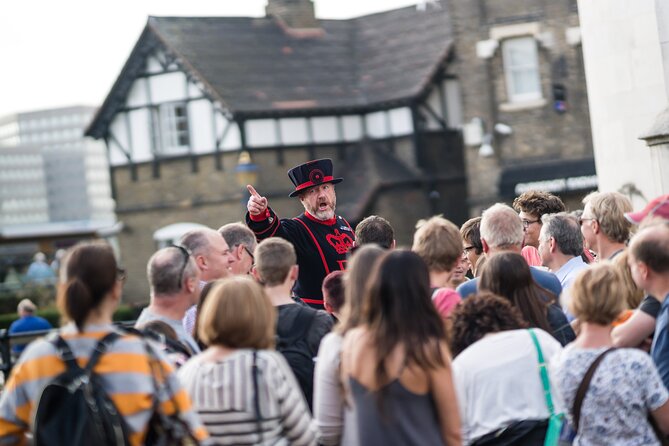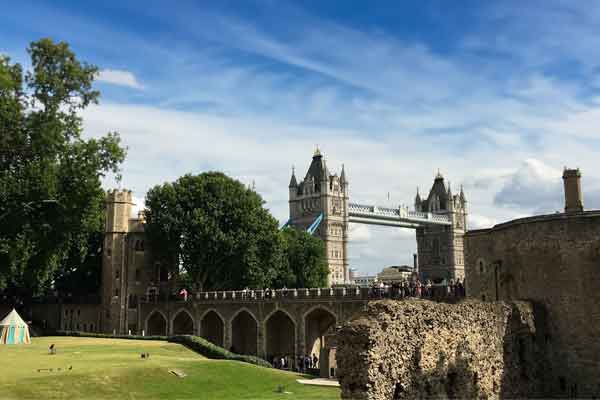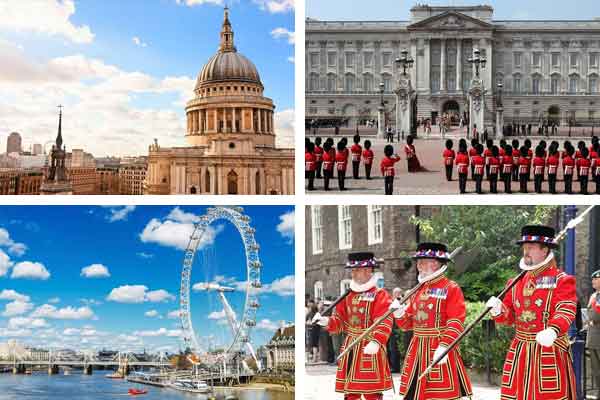Tower of London Tours & Tickets
The Ultimate Guide for Travellers
Tower of London, an iconic historic site nestled on the banks of the River Thames in central London. This magnificent fortress, officially known as Her Majesty’s Royal Palace and Fortress of the Tower of London, holds a special place in British history and has stood witness to over a thousand years of events, making it a must-visit destination for history enthusiasts, travellers, and anyone eager to explore London’s rich past.
The Tower of London is not just a mere castle; it’s a living testament to the stories, legends, and secrets of England’s monarchy. This ultimate guide will walk you through the Tower’s historical significance, its location, practical information about tickets and tours, and tips for planning your visit. Whether you’re interested in exploring its medieval architecture, discovering the Crown Jewels, or immersing yourself in tales of intrigue and imprisonment, this guide has got you covered. So, let’s embark on a journey through time and unveil the wonders of the Tower of London.
Practical Information for Visiting Tower of London
Tube / Metro
Address: London EC3N 4AB
Nearest London Underground (metro / subway) station: The Tower Hill Underground station is just 5 minutes
Opening Times
Changes with the day and the season.
Opening Times: 9:00am and 10:30am
Closing Times: 4:30pm and 5:30pm
Last admission times are typically an hour earlier than the closing time.
Time Needed to Visit
Visiting the Tower of London takes around 3 hours.
Accessibility
Wheelchair users can access most areas of the fortress, although some historic buildings may have limited access. Visitors with disabilities are entitled to a reduced admission rate, and certified assistance dogs are welcome.
Why You Should Visit Tower of London
Visiting the Tower of London is an immersive journey through centuries of British history and intrigue. Nestled along the banks of the River Thames, this iconic fortress has stood sentinel over the city for nearly a thousand years. From its origins as a royal palace to its transformation into a formidable prison, the Tower holds countless tales within its ancient walls.
Visitors can marvel at the Crown Jewels, a dazzling collection of regal treasures that have adorned monarchs for generations, or wander through the atmospheric chambers where infamous prisoners, such as Anne Boleyn and Sir Walter Raleigh, were held captive.
The Tower’s iconic Yeoman Warders, clad in their distinctive uniforms, regale guests with captivating stories of its past, while the ravens, said to safeguard the kingdom, add an air of mystique.
Whether drawn by its rich history, architectural splendour, or the chance to witness the Ceremony of the Keys, a nightly ritual dating back centuries, a visit to the Tower of London promises an unforgettable glimpse into the heart of British heritage.
My Tower of London Experience
Although I now live in London, many years ago, I remember visiting the tower myself as a tourist, and how I looked around to see the White Lady, loved the ravens, was fascinated by the jewels, and most importantly, loved listening to the Beefeater’s storytelling.
After the tour, I cherished walking in London, passing across the Tower Bridge, and seeing a few of the attractions around. You can plan to do something similar if your visit allows it.
Alternatively, you can opt for a combined tour to make the most of your day exploring the city.
Opening Times
Tower of London is open every day.
Opening Time: 9am (Tue-Sat), 10am (Mon & Sun)
Closing Time: 5:30pm
Last Admission: 3:30pm
Last Beefeater tour: 3pm
Allocate min 3 hours for your visit. Tours guided by a Yeoman Warder or ‘Beefeater’ (included in your ticket) depart every 30 min and last 1h. Your ticket is valid from opening til last time slot.
Tower of London Tickets and Prices
Tickets to the Tower of London vary depending on your age. Discounts are available for seniors, students, and children. Members go free. Booking online in advance often provides cost savings. Keep in mind that these prices may change, so verify them on the official website before your visit.
- Adult (18-64): £34.80
- Child (0-4): Free
- Child (5-15): £17.40
- Concession: £27.20 (Student, 16-17, 65+, Disabled)
- Disabled carer / companion: Free
- Groups: £32.10pp for groups of 15 people or more
Admission
Crown Jewels
Beefeater Tour
- Access to the Tower
- See the Crown Jewels
- 1h tour guided by a Yeoman Warder (Beefeter)
- Adult (16-64) from £34.80
- Senior (65+) from £27.70
- Child (5-15) from £17.40
Guided Tours and Events by Tower of London
Exploring the Tower of London is a rich experience on its own, but there are also guided tours and special events that can enhance your visit. Here’s what you need to know about these options:
Yeoman Warder (Beefeater) Tours
- The Yeoman Warders, often referred to as Beefeaters, are the iconic guardians of the Tower of London. They offer informative guided tours included in the price of admission.
- These engaging tours provide fascinating insights into the history, legends, and anecdotes associated with the Tower. Beefeaters are known for their wit and storytelling skills.
- The tours typically last about one hour and are a fantastic way to learn about the Tower’s past and the people who lived and worked here.
Twilight Tours
- For a unique experience, consider taking a Twilight Tour of the Tower of London. These evening tours offer a different perspective as you explore the historic site after regular visiting hours.
- Twilight Tours provide an opportunity to see the Tower’s attractions in a more intimate setting, with fewer crowds and special lighting effects.
- These tours often have limited availability and may require separate ticket purchases, so it’s advisable to check the official Tower of London website for details and reservations.
Special Events
- Throughout the year, the Tower of London hosts a variety of special events and exhibitions, ranging from historical reenactments to art displays.
- Events may focus on different aspects of the Tower’s history or offer a glimpse into royal traditions and ceremonies.
- Check the official Tower of London website for information on upcoming events and any additional costs associated with attending them.
Audio Guides
- If you prefer a self-guided experience but still want detailed information, consider renting an audio guide. These guides provide narrated commentary as you explore the Tower’s attractions.
- Audio guides are available in multiple languages and offer a flexible way to learn about the history and significance of each site.
Whether you opt for a Yeoman Warder tour, a Twilight Tour, or choose to explore independently with an audio guide, these options add depth to your Tower of London visit, allowing you to delve into the rich history and captivating stories of this iconic site.
Combined Tours in London Visiting The Tower of London
A full-day plan to see attractions
Combined tours typically refer to tours that combine multiple attractions or activities into one experience. These tours are designed to provide visitors with a comprehensive and convenient way to explore various highlights of a city or destination.
Coach Tour
Tour Guide
Tower of London
St Paul's Cathedral
River Cruise
- Guided Group Couch Tour (55 max)
- Air-conditioned coach transfers with professional guide
- Visit Tower of London and St. Paul’s Cathedral
- Photo stop outside Buckingham Palace
- Changing of the Guard (on selected days)
- River Thames cruise
- Upgrade options to include Cream Tea at Harrods or London Eye flight
- This tour is not wheelchair accessible
- Starts & ends in Central London
- Departs at 7:45am (arrive 15 min prior)
- Duration: 9 hours approx.
- Adult (17-59) from £143
- Senior (60+) from £140
- Child (3-16) from £133
Our Verdict: This comprehensive tour offers travellers the opportunity to see some of London’s top landmarks in one day. It includes a visit to the magnificent St Paul’s Cathedral, a photo stop at Westminster Abbey, witnessing the Changing of the Guard ceremony at Buckingham Palace, and exploring the historic Tower of London. Travellers can also enjoy an extended river sightseeing cruise along the Thames River. Additionally, there’s an option to upgrade the experience with a flight on the London Eye or a delightful cream tea at Harrods. This tour is an excellent choice for those who want to cover multiple iconic sites and save time on transportation.
Coach Tour
Tour Guide
St Paul's
London Eye
Tower of London
River Cruise
- Group full day tour (max. 53) with tour guide
- Transport in luxury air-conditioned coach
- Driving tour of London landmarks
- Entry to St. Paul’s Cathedral
- Changing of the Guard if available or Horse Guards Parade
- Thames River cruise
- London Eye flight
- Tower of London entry
- English or Spanish tour options
- Starts & ends in Central London
- Departs at 8am
- Duration: 9 hours approx.
- Adult (17-59) from £165
- Senior (60+) from £160
- Child (3-16) from £155
Our Verdict: Immerse yourself in the essence of London with the Total London Experience tour. Embark on a comprehensive tour of London’s highlights, starting with a scenic driving tour past iconic landmarks. Then, step inside the majestic St. Paul’s Cathedral to admire its architectural wonders. Catch the mesmerising Changing of the Guard ceremony at Buckingham Palace, or witness the regal spectacle at Horse Guards Parade, depending on availability. Next, enjoy a leisurely Thames River cruise, soaking in breathtaking views of the city’s skyline. Cap off your adventure with a flight on the renowned London Eye, offering unparalleled vistas from above. Finally, delve into history at the Tower of London with included entry, completing your ultimate London experience.
Why are Yeoman Warders Called "Beefeaters?"
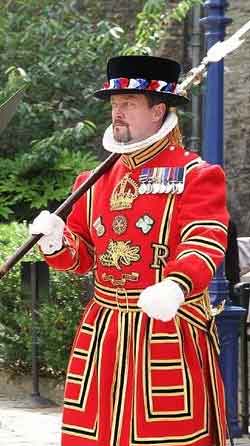
The term “Beefeater” is a nickname for the Yeoman Warders, the ceremonial guardians of the Tower of London. The origin of this curious nickname is the subject of some debate, and there are several theories regarding its roots:
- Royal Rations: One theory suggests that the name “Beefeater” comes from the fact that Yeoman Warders were historically given daily rations of beef as part of their compensation. In the past, beef was considered a high-quality meat, and receiving such rations was a privilege.
- Uniforms: Another theory links the nickname to the Yeoman Warders’ distinctive uniforms, which are adorned with red and gold. It is said that these vibrant uniforms may have reminded people of roasted beef, earning them the moniker “Beefeaters.”
- Derivation from “Buffetier”: There is a theory that “Beefeater” is derived from the French word “buffetier,” which referred to someone who served food in a royal palace. This theory suggests that the term was used because the Yeoman Warders had roles in the royal household.
While the exact origin remains uncertain, the nickname “Beefeater” has been associated with the Yeoman Warders for centuries, and it has become an enduring part of their identity. Today, the Beefeaters are known not only for their historic role as guardians of the Tower of London but also for their engaging guided tours and role as storytellers, sharing the Tower’s intriguing history with visitors from around the world.
Why are ceremonial guardians called Yeoman Warders, what does it mean?
The ceremonial guardians at the Tower of London, commonly known as Yeoman Warders, hold the official title of “Yeomen Warders of Her Majesty’s Royal Palace and Fortress the Tower of London.” The term “Yeoman” historically referred to a man holding a rank in a royal or noble household, typically as a servant or attendant.
The word “Warder” signifies a guardian or keeper of a specific place or property, and in this context, it relates to their role as protectors of the Tower of London. The combination of “Yeoman” and “Warder” essentially describes them as royal attendants and guardians of the Tower.
Yeoman Warders have a long-standing tradition of guarding the Tower of London and its treasures, and they also serve as tour guides, sharing the history and stories of the Tower with visitors. They are often informally referred to as “Beefeaters,” a nickname whose origin is somewhat uncertain. One theory is that they received part of their payment in the form of beef rations, but the exact origin of the nickname remains a subject of debate.
Map of Tower of London
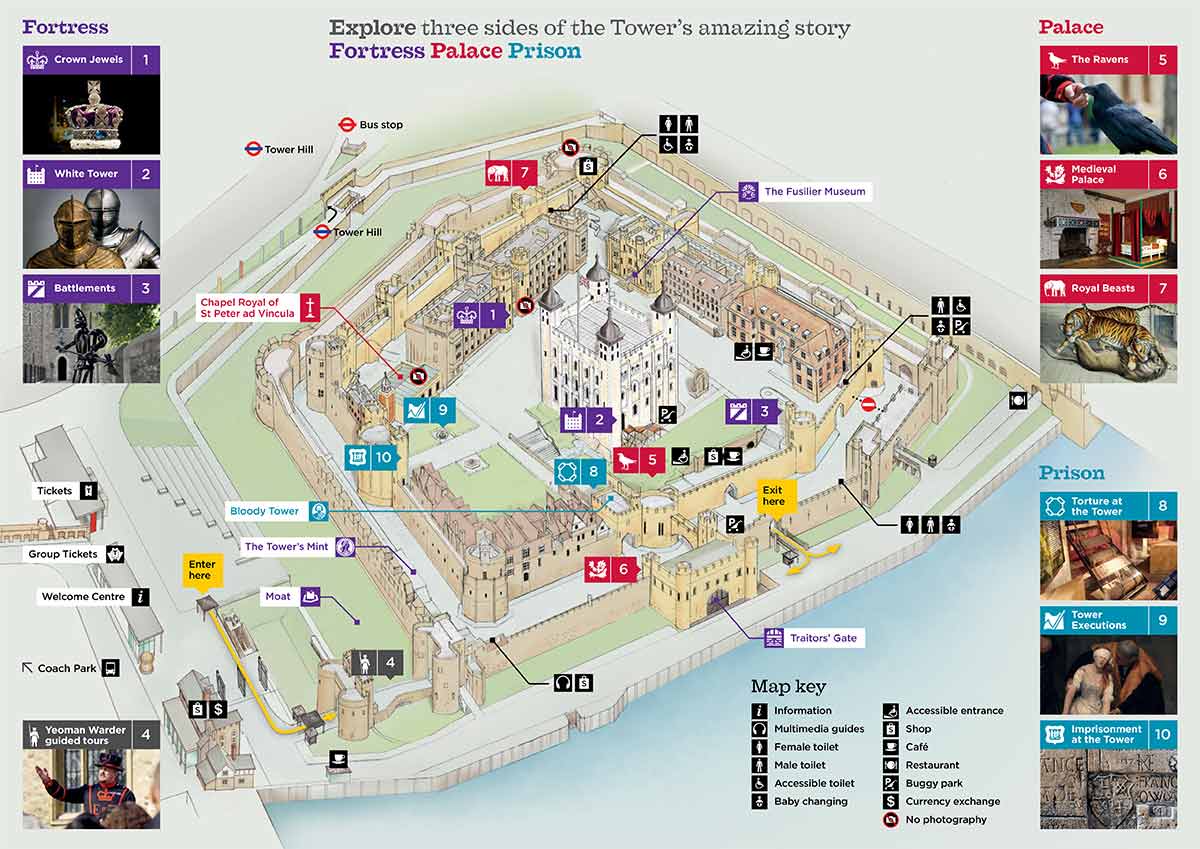
Map courtesy of Historic Royal Palaces. You can download the original PDF version on the official website.
What to See and Do at the Tower of London
Visiting the Tower of London is a captivating experience, and there’s much to explore. Here’s a comprehensive list of the main attractions and activities, along with some traveller tips:
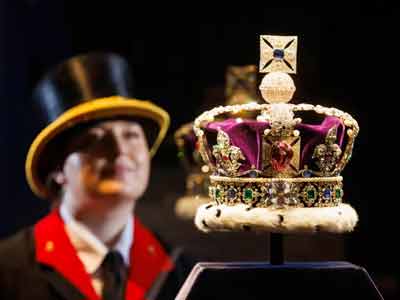
Start your journey with a visit to the Crown Jewels. Marvel at the dazzling regalia, including the Imperial State Crown and the Sovereign’s Sceptre with Cross. To avoid crowds, consider visiting first thing in the morning.
Image: Royal Collection Trust / © His Majesty King Charles III 2023

White Tower
Explore the historic heart of the Tower of London, the White Tower. Inside, you’ll find fascinating exhibitions showcasing arms and armour, including Henry VIII’s armour. The interactive displays are fascinating.
Image © Historic Royal Palaces
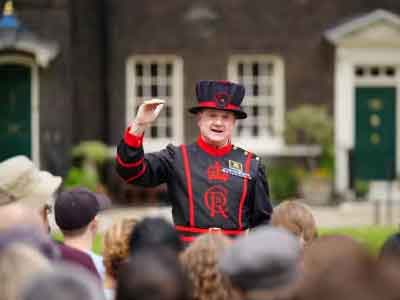
Yeoman Warders (Beefeaters) Tour
Immerse yourself in the rich tapestry of history by joining one of the Yeoman Warders’ captivating guided tours. These iconic figures provide entertaining and informative insights into the Tower’s history. Their engaging stories bring the past to life.
Image © Historic Royal Palaces
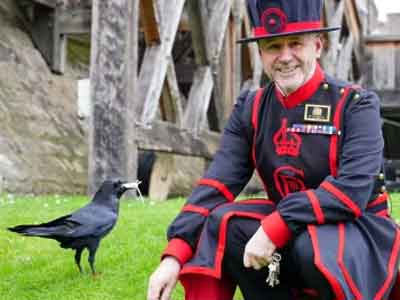
Ravens
Don’t miss the legendary ravens that call the Tower home. According to folklore, if the ravens ever leave, the Tower and the kingdom will fall. Watch their playful antics and learn about their care. Read more about the ravens.
Image © Historic Royal Palaces
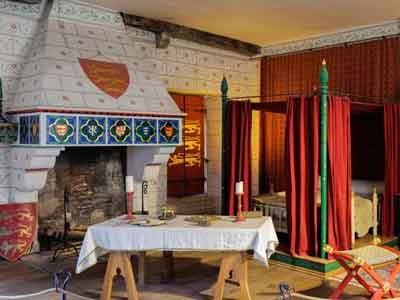
Medieval Palace
Immerse yourself in the opulent Medieval Palace. Explore the royal chambers, including the King’s and Queen’s bedrooms. It’s a glimpse into the lifestyles of past monarchs.
Image © Historic Royal Palaces
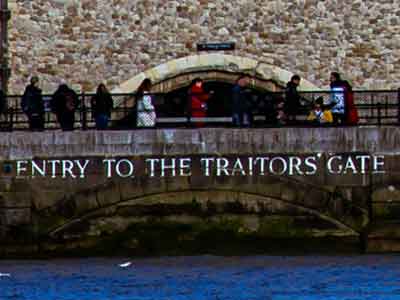
Traitors' Gate
Discover the infamous Traitors’ Gate, where prisoners entered the Tower. It’s a haunting reminder of the Tower’s dark past. You can access it during your visit.
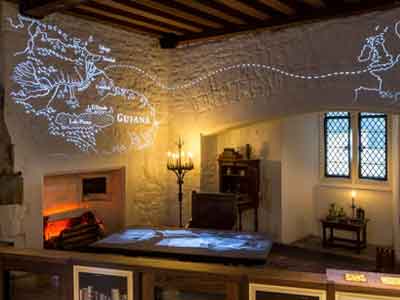
Bloody Tower
Delve into the mysteries of the Bloody Tower. Explore its history and the alleged murders of the young Princes in the Tower. The interactive exhibits shed light on this enigmatic story.
Image © Historic Royal Palaces
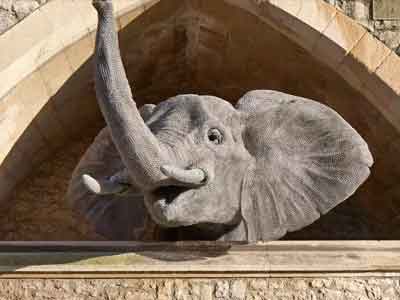
Royal Beasts
Learn about the Tower’s former menagerie and the exotic animals that once resided here. The Royal Beasts exhibit offers a unique perspective on the Tower’s diverse history.
Image © Historic Royal Palaces
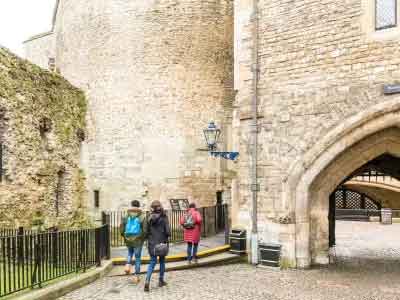
Wall Walk
Take a leisurely stroll along the Tower’s walls. The Wall Walk offers panoramic views of the Thames River and the city of London. It’s a peaceful escape from the bustling attractions.
Image © Historic Royal Palaces
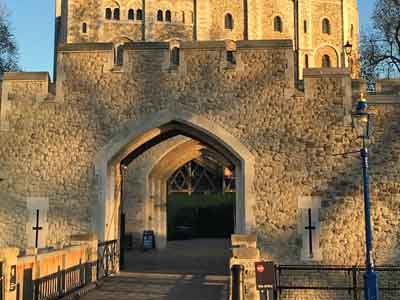
Byward Tower
Visit the Byward Tower, the main entrance to the Tower. Its impressive façade and architecture make it a captivating sight. Be sure to take a moment to admire the Tower Bridge from this vantage point.
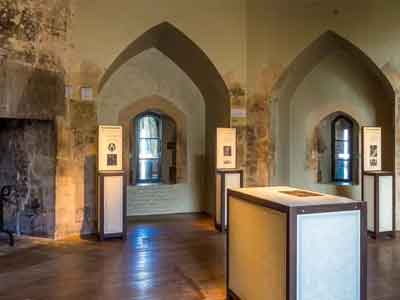
Imprisonment at the Tower
If you are interested in the Tower of London’s history as a prison, check out the ‘Tower of London as a Prison’ section to see a list of the places in the tower where prisoners were kept for more insights into this fascinating aspect.
Image © Historic Royal Palaces
Why are There Ravens at the Tower of London?
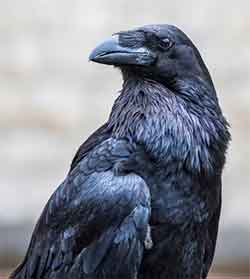
The ravens at the Tower of London are a longstanding and famous tradition. According to legend, the presence of at least six ravens at the Tower is believed to be crucial for the security and well-being of the kingdom. The legend goes that if the ravens were ever to leave the Tower, disaster would befall the nation.
To ensure the ravens remain at the Tower, their wings are clipped slightly to prevent them from flying away. They are also well cared for by the Ravenmaster, a Yeoman Warder responsible for their welfare. The ravens are provided with food and shelter within the Tower’s grounds.
The history of the ravens at the Tower is a mixture of fact and folklore, but it has become a cherished tradition. Visitors to the Tower can see the ravens and even learn more about their history and care from the Ravenmaster during guided tours.
While the legend of the ravens is steeped in myth, the Tower of London continues to maintain the tradition, ensuring that the birds remain a symbol of the Tower’s rich history and cultural significance.
Crown Jewels

Imperial State Crown
The Crown Jewels exhibit at the Tower of London is a dazzling and historic collection that showcases some of the most important regalia in the British monarchy. Here’s what you can expect when visiting this remarkable attraction.
Significance and What You Can See
The Crown Jewels hold immense significance in British history and monarchy. They represent the regal splendour and ceremonial grandeur of the British Crown.
These jewels are used during coronations and other state occasions, symbolising the authority and continuity of the monarchy.
Imperial State Crown
This iconic crown, with over 2,800 diamonds, including the famous Cullinan II diamond, is adorned with sapphires, emeralds, and pearls, worn by the reigning monarch during the State Opening of Parliament.
Sovereign's Sceptre with Cross
A symbol of royal authority and opulence, the Sovereign’s Sceptre prominently displays the largest colorless cut diamond in the world, the Cullinan I diamond, widely recognized as the Great Star of Africa.
The Crown Jewels
Admire a breathtaking and awe-inspiring collection of crowns, sceptres, orbs, rings, and other exquisite pieces used by monarchs throughout history, each meticulously crafted and rich in profound symbolism.
The Koh-i-Noor Diamond
Coronation Regalia
Explore the intricate and ornate regalia used during coronation ceremonies, including the Coronation Spoon and the Ampulla, which holds holy anointing oil.
State Swords and Armills
Discover the fascinating array of swords, armills (bracelets), and an assortment of other regal items that hold significant roles in royal ceremonies and rituals alike.
Visitor Tips
- Arrive early to avoid long queues, especially during peak tourist seasons.
- Photography is not allowed inside the Crown Jewels exhibit.
- Take your time to appreciate the exquisite craftsmanship and historical significance of these treasures.
- Listen to any available audio guides or take a guided tour for deeper insights into the Crown Jewels’ history.
Visiting the Crown Jewels exhibit is a remarkable journey through British monarchy, history, and artistry. It’s a must-see for anyone exploring the Tower of London.
History and Ghost Stories
The Tower of London boasts a rich and storied history, with its origins dating back to the Norman Conquest of England in the 11th century. Originally constructed as a symbol of power and a royal residence, it has since served many roles, including a royal mint, a treasury, and a prison. Over the centuries, it has witnessed countless historical events and played a pivotal role in the country’s history.
When was the Tower of London used as a Prison?
The Tower of London has a history of being used as a prison that spans several centuries. It was used as a prison from its early days as a royal palace and fortress in the 11th century up until the 20th century.
Why was the Tower of London used as a Prison?
The Tower was used as a prison for various reasons:
- Political Prisoners: Many individuals who posed a political threat to the reigning monarch or government were imprisoned in the Tower. This included nobles, courtiers, and individuals involved in plots or rebellions.
- Religious Prisoners: During the religious turmoil of the Tudor period, individuals with religious differences, such as Catholics and Protestants, were imprisoned in the Tower.
- High-Profile Prisoners: Some of the most famous prisoners held at the Tower included Anne Boleyn, the second wife of King Henry VIII, who was accused of adultery and treason, and Lady Jane Grey, who was briefly proclaimed queen and later imprisoned.
- Spies and Traitors: The Tower was also used to detain spies and those accused of espionage or treason against the state.
- Prisoners of War: During times of conflict, the Tower was used to hold prisoners of war from various nations.
- Common Criminals: In addition to high-profile prisoners, the Tower was used to hold common criminals.
The Tower of London’s role as a prison is an important part of its history, and visitors can explore the various areas where prisoners were held, learn about their stories, and gain insight into the Tower’s diverse historical functions.
Where were the prisoners held in the Tower of London?
Prisoners held at the Tower of London were kept in various locations within the complex, depending on their status, the time period, and the nature of their imprisonment. Some of the notable places where prisoners were held include:
- Wakefield Tower: This tower was often used to hold high-status prisoners, including royalty and nobles. It was considered a relatively comfortable place of confinement and provided more privacy.
- Beauchamp Tower: This tower housed many important political prisoners, and its walls are covered with inscriptions carved by prisoners over the centuries.
- Salt Tower: This tower was used for various purposes, including imprisonment. It is known for the mysterious disappearance of the Princes in the Tower, Edward V and Richard of Shrewsbury, who were held here and disappeared during the reign of Richard III.
- Bell Tower: Also known as the “Bloody Tower,” it was used for imprisoning high-profile figures, including Anne Boleyn and Lady Jane Grey. Anne Boleyn spent her final days here before her execution.
- Byward Tower: Used to hold important prisoners, this tower offered a view of the River Thames and was considered a secure location.
- Martin Tower: This tower housed the Crown Jewels, but it was also used to imprison notable figures, including Sir Walter Raleigh.
- Lanthorn Tower: Located on the outer curtain wall, it was used to hold lesser-known prisoners, including those accused of petty crimes.
- St. Thomas’s Tower: This tower served as the Water Gate and was not typically used for imprisonment. However, it did briefly hold Sir Thomas More before his execution.
Who was Anne Boleyn?
Anne Boleyn was the second wife of King Henry VIII of England and the mother of Queen Elizabeth I. She played a significant role in the English Reformation and was famously executed in 1536. The execution was due to false charges of adultery, incest, and high treason, primarily driven by her failure to produce a male heir for King Henry VIII.
Is the Tower of London Haunted?
One of the most fascinating aspects of the Tower’s history is its reputation for being haunted. Many visitors and staff have reported eerie encounters and unexplained phenomena within its ancient walls. Some of the Tower’s most famous spectral residents include the ghostly figure of Anne Boleyn, the ill-fated second wife of King Henry VIII, who is said to wander the grounds with her head tucked beneath her arm. The White Lady believed to be the spirit of Arbella Stuart, another tragic historical figure, is said to roam the corridors in her white gown.
Whether you’re a history enthusiast or simply intrigued by tales of the supernatural, exploring the Tower’s captivating history and ghost stories adds an extra layer of intrigue to your visit. Be sure to keep your eyes and ears open as you traverse its hallowed halls—you might encounter a ghostly presence from the past.
Who is the White Lady?
The White Lady, a famous apparition associated with the Tower of London, is believed to be the spirit of Arbella Stuart. Arbella was a cousin of King James I and had a claim to the English throne. However, her aspirations for power led to her downfall. She was imprisoned in the Tower of London in 1611, where she remained until her death in 1615. It is said that her ghost, dressed in a white gown, continues to wander the Tower’s corridors, perpetuating her tragic tale from the afterlife.
Dining and Refreshments in and around Tower of London
During your visit to the Tower of London, you’ll have various dining options to choose from, ensuring you stay energised and refreshed throughout your exploration. Here’s a look at what’s available:
The Wharf Kitchen
Located within the Tower grounds, The Wharf Kitchen offers a selection of hot and cold dishes, including sandwiches, salads, and hot meals. It’s an ideal spot for a quick bite or a leisurely meal.
Ravens' Café
If you’re looking for a relaxed setting, Ravens’ Café provides indoor and outdoor seating options. Enjoy freshly brewed coffee, tea, sandwiches, cakes, and other delightful treats amidst the historic surroundings.
Tower Green: Picnic Area
If you prefer a picnic, feel free to bring your own food and enjoy a delightful meal in the peaceful surroundings of Tower Green. It’s a tranquil and serene spot, perfect for relaxation and immersing yourself in the historic atmosphere.
Nearby Restaurants and Cafes
After your visit to the Tower, you’ll find several restaurants, cafes, and eateries in the vicinity. Explore the charming streets of London and discover local dining spots offering a wide range of cuisines to suit every palate.
The Hung Drawn & Quartered
This traditional British pub offers a selection of classic dishes, including fish and chips, pies, and hearty British fare.
- Type of Food: British Pub and Restaurant.
- Approximately a 5-minute walk
The Ivy Tower Bridge
Located near Tower Bridge, The Ivy offers an elegant dining experience with a diverse menu featuring European-inspired cuisine.
- Type of Food: Modern European
- Approximately a 10-minute walk
The Liberty Bounds
Situated close to the Tower, this pub serves classic British dishes, including burgers, roast dinners, and a variety of beers.
- Type of Food: British Pub and Restaurant
- Approximately a 5-minute walk
Caffe Nero
A popular chain of coffee shops where you can enjoy a range of coffee beverages, pastries, and sandwiches.
- Type of Food: Coffee Shop
- Approximately a 3-minute walk
Pret A Manger
Known for its freshly prepared sandwiches, salads, and hot drinks, Pret A Manger is a convenient choice for a quick meal or snack.
- Type of Food: Coffee Shop and Cafe
- Approximately a 2-minute walk
Please note that these are just a few options, and there are many more dining establishments in the vicinity to suit various tastes and preferences. Whether you choose to dine within the Tower or venture out to nearby dining establishments, you’ll have plenty of options to satisfy your hunger and quench your thirst.
Where is the Tower of London? How to Get There
Located in the heart of London in South Kensington, the Natural History Museum is easily accessible, with excellent transport links making it a convenient destination for visitors to reach and explore.
By London Underground (Tube / Metro / Subway)
The Tower Hill Underground station is your best bet, and it’s just a 5-minute walk away. This station is served by the District and Circle lines and offers step-free access to street level.
If you’re coming from Monument (Circle & District lines), Bank (Central, Northern, Waterloo & City lines), Aldgate (Circle & Metropolitan lines), or Aldgate East (District & Hammersmith & City lines) Underground stations, it’s a comfortable 10-15 minute walk.
![]()
![]()





London Buses
Several bus routes can get you to the Tower of London, including 15, 42, 78, 100, 343, and RV1. They all stop nearby.
Hop-on Hop-off Sightseeing Buses
If you’re taking one of the major hop-on hop-off sightseeing bus tours in London, you’re in luck. They all pass by the Tower of London, so you can hop off and explore.
Nearest Train Stations
London Bridge and Fenchurch Street stations are nearby, about a 10-15 minute walk.
Liverpool Street station is a bit farther, but you can get to the Tower in about 20 minutes.
London Charing Cross station is about 25 minutes away.
By River Services
For a scenic route, you can take a riverboat. Tower Pier is where you want to go, and it’s served by boats from various piers, including Westminster and London Eye. The pier is right next to the Tower entrance.
Car Parking for Those Driving
Getting to the Tower of London by car can be challenging due to sparse and expensive parking in London, compounded by the congestion charge zone. Tower Hill itself is vehicle-free, with no on-site parking available. However, nearby options include Tower Hill Coach and Car Park, located just a 2-minute walk away, and Minories car park, a 10-minute walk. Tower Hill Coach and Car Park offer accessible parking with designated bays for Blue Badge holders.
By Bike
The nearest Santander Cycles docking stations to the Tower of London are located at Tower Hill and Tower Gardens.
Walking to the Tower of London
To get to the Tower, you can utilise TFL’s Route Planner, which assists in creating routes from your starting point and calculates timings based on distance.
How to Plan Your Visit to the Tower of London
Planning your visit to the Tower of London can enhance your experience and ensure you make the most of your time there. Here are some tips to help you plan your day:
- Duration of Visit: A typical visit to the Tower of London can take around 2 to 3 hours, but you may want to allocate more time if you wish to explore every nook and cranny. Consider your interests and schedule accordingly.
- Ticket Booking: To avoid long queues, especially during peak tourist seasons, consider booking your tickets online in advance. This can save you time and ensure a smoother entry.
- Guided Tours: If you’re interested in delving deeper into the history and stories of the Tower, consider joining a guided tour. These tours are led by knowledgeable guides who can provide fascinating insights. We highly recommend booking these tours in advance.
- Audio Guides: Alternatively, you can opt for audio guides, which are available in multiple languages. These guides provide informative commentary as you explore the various attractions.
- Best Times to Visit: To avoid crowds, plan your visit for the early morning or late afternoon. Weekdays also tend to be less crowded than weekends.
- Exploration Order: While there’s no set order to explore the Tower, consider starting with the Crown Jewels, as this tends to get busier later in the day. Afterward, you can explore other areas of interest at your own pace.
- Lunch and Refreshments: The Tower has dining options where you can enjoy a meal or grab a quick snack. You can also bring your own food and have a picnic in the nearby gardens. Check our Dining and Refreshments section to see dining options and nearby restaurants.
- Photography: Capture your memories with photos, but be mindful of the rules regarding photography, especially in sensitive areas.
- Souvenirs: If you’re interested in taking home gifts and mementos from your visit, be sure to allocate some time to explore the gift shop. Remember to factor in this time when planning your overall day at the Tower.
- Nearby Attractions: Since the Tower of London is centrally located, you can easily explore other nearby attractions, such as Tower Bridge, Borough Market, and the Shard. Plan your itinerary to make the most of your day. Check our list of nearby attractions along with a map showing the walking distances in between below.
Maps
To help you navigate, we recommend using digital mapping services like Google Maps, which can provide step-by-step directions to the Tower of London from your current location.
- Accessibility: The Tower of London is committed to providing accessibility for all visitors. Wheelchair users can access most areas of the fortress, although some historic buildings may have limited access. Visitors with disabilities are entitled to a reduced admission rate, and certified assistance dogs are welcome.
- Tips for Visitors: To make the most of your visit, consider arriving early in the morning to beat the crowds, especially during the peak tourist season. Booking your tickets online in advance can save you time and ensure availability. Don’t forget to check the official website for any special exhibitions or events happening during your visit, as they can enhance your experience. Finally, exploring the Tower at your own pace allows you to immerse yourself in its history, so allocate at least 2-3 hours for your visit.
Accessibility at the Tower of London
The Tower of London welcomes all visitors, including those with accessibility needs. While historic features like limited wheelchair access and numerous stairs present challenges, our dedicated staff and volunteers are available to provide assistance throughout your visit. Accessible toilets are conveniently located, and guide dogs are welcome companions. Additionally, an accessibility guide is available for download in PDF format, from the official website, offering further assistance for planning your visit.
- The Jewel House, housing the Crown Jewels, offers level access with a travelator.
- There is a lift in the White Tower for shop access.
- A platform lift in the Crown Jewels exhibition aids viewing.
- Ramps are available at specific locations, but the Battlements, Bloody Tower and Imprisonment at the Tower exhibition lack lift or ramp access.
Wheelchairs are available on a first-come, first-served basis.
Seating options cater to comfort and convenience:
- Outdoor bench seating with backrests and armrests can be found at Tower Green and outside the White Tower, across from the New Armouries Café.
- Indoor seating is provided within the New Armouries Café for those looking to dine indoors.
Visitors who are blind or partially sighted can explore the Tower through various means.
- Descriptive tours are offered for the Jewel House and White Tower.
- While audio guide tours are currently unavailable for these visitors, Braille displays are present in the Crown Jewels and Coins and Kings exhibitions.
- Tactile raised 2D images of the Crown Jewels are available in the Jewel House, and large print guides can be found in the Coins and Kings exhibition.
For visitors who are deaf or hard of hearing, the Tower of London offers various accessibility features:
- Induction loops are provided at ticket boxes and all shops; switch your hearing aid to the ‘T’ setting to activate.
- A British Sign Language Digital Visitor Guide is available, offering self-led tours included with Tower admission for British Sign Language users.
- Trained British Sign Language (BSL) interpreters lead guided tours, which can be booked in advance.
- Subtitles are provided in the video shown in the Medieval Palace.
For visitors with neurodiverse needs, the Tower of London provides several accessibility considerations:
- Quiet times: Early morning visits before 11:00 are recommended for a calmer experience, especially during peak periods like Easter to October.
- Crowd management during Gun Salutes: Before these events, Tower Wharf gets busy; visitors are directed to a designated area in front of the Tower shop.
- Lighting and sound: Low light levels are maintained in certain areas for conservation, and there are sound effects in specific locations. Gun Salutes include loud cannon fire on selected dates, with noise audible within the Tower.
- Tower Autism Guide: Parents and carers of individuals on the autism spectrum can download this guide from the official website for additional information on planning their visit.
These measures aim to enhance the accessibility and comfort of all visitors, accommodating diverse sensory needs.
- Toilets are conveniently located at various points, including Brick Tower (with male, female, accessible toilets, and baby changing facilities), Salt Tower (male toilets), and Cradle Tower (female and accessible toilets).
- A Changing Places toilet is situated on the ground floor lobby of the New Armouries building, adjacent to the café. Access requires a radar key, available from café staff and to be returned after use.
Nearby Attractions
The Tower of London is situated in a prime location within London, making it convenient to explore other nearby attractions in the city. After your visit to the Tower, consider checking out these exciting places:
- Tower Bridge: Located adjacent to the Tower of London, this iconic drawbridge offers breathtaking views of the River Thames. You can even walk across its glass-floored walkway for a unique perspective.
- The Shard: London’s tallest skyscraper, The Shard, is a short distance away. Take an elevator ride to its viewing platform for panoramic vistas of the city skyline.
- Borough Market: Food enthusiasts will delight in Borough Market, where you can sample a wide array of delicious treats, fresh produce, and international cuisine.
- HMS Belfast: This historic warship, moored on the Thames, offers a fascinating look into naval history.
- City Hall (110 The Queens Walk): Designed by architect Norman Foster, City Hall is known for its distinctive shape. You can admire its architecture and enjoy riverside walks nearby.
- Southwark Cathedral: This stunning cathedral showcases beautiful Gothic and Romanesque architecture and offers a peaceful place for reflection.
- River Thames Cruises: Numerous boat cruises depart from nearby piers, allowing you to explore London from the water and see famous landmarks from a different perspective.
- Tate Modern: Located just a 30-minute walk from the Tower of London, Tate Modern is one of the world’s most renowned contemporary art museums, featuring a diverse collection of modern and contemporary artworks.
With these attractions close at hand, you can easily plan a full day of exploration around the Tower of London. Whether you’re interested in history, architecture, or simply enjoying the vibrant atmosphere of London, there’s something nearby to suit your interests.

